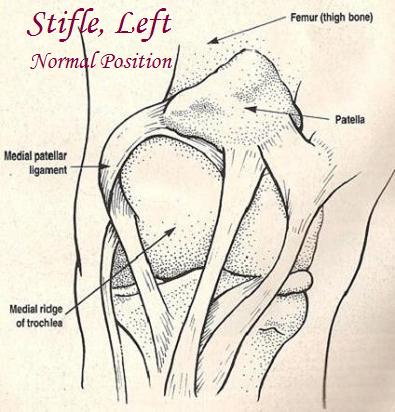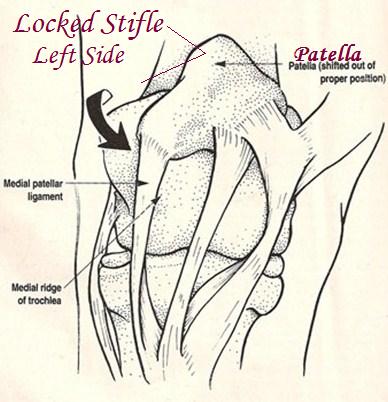Emergency Care and Preparedness
 Saturday, July 2, 2016
Saturday, July 2, 2016 If you own horses long enough, sooner or later you are likely to confront a medical emergency. There are several behavioral traits that make horses especially accident-prone: one is their instinctive flight-or-fight response; another is their dominance hierarchy - the need to establish the pecking order within a herd; and a third is their natural curiosity. Such behaviors account for many of the cuts, bruises, and abrasions that horses suffer. In fact, lacerations are probably the most common emergency that horse owners must contend with. There are other types of emergencies as well, such as colic, foaling difficulties, acute lameness, seizures, and illness. As a horse owner, you must know how to recognize serious problems and respond promptly, taking appropriate action while awaiting the arrival of your veterinarian.
Recognizing Signs Of Distress
When a horse is cut or bleeding, it's obvious that there is a problem. But in cases of colic, illness, or a more subtle injury, it may not be as apparent. That's why it's important to know your horse's normal vital signs, including temperature, pulse, and respiration (TPR), as well as its normal behavior patterns. You must be a good observer so that you readily recognize signs of ill health
What's Normal?
There will be variations in individual temperature, pulse, and respiration values. Take several baseline measurements when the horse is healthy, rested, and relaxed. Write them down and keep them within easy reach, perhaps with your first aid kit, so you have them to compare to in case of an emergency.
Normal ranges for adult horses are:
• Pulse rate: 28-44 beats per minute.
• Respiratory rate: 12-20 breaths per minute.
• Rectal temperature: 99.5° F to 101.5° F. If the horse's temperature exceeds 102.5° F, contact your veterinarian immediately. Temperatures of over 103° F indicate a serious disorder.
• Capillary refill time (time it takes for color to return to gum tissue adjacent to teeth after pressing and releasing with your thumb): 2 seconds.
Other observations you should note:
• Skin pliability is tested by pinching or folding a flap of neck skin and releasing. It should immediately snap back into place. Failure to do so is evidence of dehydration.
• Color of the mucous membranes of gums, nostrils, conjunctiva (inner eye tissue), and inner lips of vulva should be pink. Bright red, pale pink to white, or bluish-purple coloring may indicate problems.
• Color, consistency, and volume of feces and urine should be typical of that individual's usual excretions. Straining or failure to excrete should be noted.
• Signs of distress, anxiety or discomfort.
• Lethargy, depression or a horse that's "off-feed."
• Presence or absence of gut sounds.
• Evidence of lameness such as head-bobbing, reluctance to move, odd stance, pain, unwillingness to rise.
• Bleeding, swelling, evidence of pain.
• Seizures, paralysis, or "tying up" (form of muscle cramps that ranges in severity from mild stiffness to life-threatening illness).
Action Plan
No matter what emergency you may face in the future, mentally rehearse what steps you will take to avoid letting panic take control. Here are some guidelines to help you prepare:
1. Keep your veterinarian's number by each phone, including how the practitioner can be reached after-hours. If you have a speed dial system, key it in, but also keep the number posted.
2. Consult with your regular veterinarian regarding back-up or referring veterinarian's number in case you cannot reach your regular veterinarian quickly enough.
3. Know in advance the most direct route to an equine surgery center in case you need to transport the horse.
4. Post the names and phone numbers of nearby friends and neighbors who can assist you in an emergency while you wait for the veterinarian.
5. Prepare a first aid kit and store it in a clean, dry, readily accessible place. Make sure that family members and other barn users know where the kit is.
6. Also keep a first aid kit in your horse trailer or towing vehicle, and a pared-down version to carry on the trail.
First Aid Kits
First aid kits can be simple or elaborate, but there are some essential items. Here is a short list to get yours started. (*Material that should be sterile.)
• * Cotton roll.
• *Non-Stick bandage/Telfa pad.
• *White Gauze/Cling Wrap.
• *Gauze pads, assorted sizes.
• Brown Gauze.
• Adhesive wrap (vet wrap) and adhesive tape.
• Leg wraps.
• Sharp scissors.
• Hemostats/Tweezer.
• Duct Tape
• Rectal thermometer with string and clip attached.
• Surgical scrub and antiseptic solution.
• Latex gloves.
• Flashlight and spare batteries.
• Permanent marker pen.
• Pliers (to pull nails from shoe).
• 6 in. diameter PVC tubing cut in half the long way (like a gutter) into lengths of 1-1 /2 to 2 ft. (for emergency splinting).
Emergency Wound Care
The sight of blood may unnerve you, but maintaining your presence of mind can save your horse's life. The initial steps you take to treat a wound can prevent further damage and speed healing.
How you proceed will depend on your individual circumstances, and you must exercise good judgment. The following should be viewed as guidelines:
1. Catch and calm the horse to prevent further injury. Move the horse to a stall or other familiar surroundings if this is possible without causing distress or further injury to the horse. Providing hay or grain can also be a good distraction.
2. Get help before attempting to treat or evaluate a wound. It can be difficult and very dangerous to try to inspect or clean the wound without someone to hold the horse. You cannot help your horse if you are seriously injured yourself.
3. Evaluate the location, depth, and severity of the wound. Call your veterinarian for a recommendation anytime you feel your horse is in need of emergency care. Here are some examples of situations where your veterinarian should be called:
A. There appears to be excessive bleeding.
B. The entire skin thickness has been penetrated.
C. Any structures underlying the skin are visible.
D. The wound occurs near or over a joint.
E. A puncture has occurred.
F. A severe wound has occurred in the lower leg at
or below knee or hock level.
G. The wound is severely contaminated.
4. Consult with your veterinarian regarding a recommendation before you attempt to clean the wound or remove debris or penetrating objects, as you may cause uncontrollable bleeding or do further damage to the wound. Large objects should be stabilized to avoid damaging movement if possible. Don't put anything on the wound except a compress or cold water.
5. Stop the bleeding by covering the wound with a sterile, absorbent pad (not cotton), applying firm, steady, even pressure to the wound.
6. Do not medicate or tranquilize the horse unless specifically directed by your veterinarian. If the horse has suffered severe blood loss or shock, the administration of certain drugs can be life-threatening.
7. If the eye is injured, do not attempt to treat. Await your veterinarian.
8. If a horse steps on a nail or other sharp object and it remains embedded in the hoof, first clean the hoof. Consult with your veterinarian regarding a recommendation before you remove the nail. If your veterinarian advises, carefully remove the nail to prevent the horse from stepping on it and driving it deeper into the hoof cavity. As you remove it, be sure to mark the exact point and depth of entry with tape and/or a marker so the veterinarian can assess the extent of damage. Apply antiseptic to the wound, and wrap to prevent additional contamination.
9. All horses being treated for lacerations or puncture wounds will require a tetanus booster.
Other Emergencies
There are far too many types of emergencies - from heat stroke to hyperkalemic periodic paralysis, bone fractures to snake bites, foaling difficulties to colic - to adequately cover them all in this talk. However, regardless of the situation, it's important to remember these points:
1. Keep the horse as calm as possible. Your own calm behavior will help achieve this.
2. Move the animal to a safe area where it is unlikely to be injured should it go down.
3. Get someone to help you, and delegate responsibilities, such as calling the veterinarian, retrieving the first aid kit, holding the horse, etc.
4. Notify your veterinarian immediately. Be prepared to provide specific information about the horse's condition, as mentioned above, and other data that will help your practitioner assess the immediacy of the danger and instruct you in how to proceed.
5. Listen closely and follow your equine practitioner's instructions.
6. Do not administer drugs, especially tranquilizers or sedatives, unless specifically instructed to do so by the veterinarian.
Summary
Many accidents can be prevented by taking the time to evaluate your horse's environment and removing potential hazards. Also, assess your management routines to make them safer. Mentally rehearse your emergency action plan. Preparation will help you stay calm in the event of a real emergency. Keep your veterinarian's phone number and your first aid kit handy. In an emergency, time is critical. Don't be concerned with overreacting or annoying your veterinarian. By acting quickly and promptly, you can minimize the consequences of an injury or illness. Your horse's health and well-being depend on it.
 Email Article Comments Off
Email Article Comments Off 



